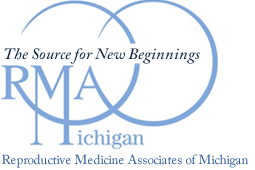About RMA of Michigan
Our Commitment to Your Fertility Journey
At RMA of Michigan, our commitment to delivering compassionate, comprehensive fertility services is unwavering. We embark on this journey with you, every step towards achieving your dream of parenthood. Our team, comprising seasoned fertility specialists, leverages cutting-edge technology and facilities to devise treatment plans that are as unique as your needs. We recognize the emotional and physical hurdles associated with fertility treatments and stand ready to provide hope, guidance, and expert care.
At our state-of-the-art facilities, we blend technical proficiency with a deeply empathetic approach, ensuring that your path to parenthood is supported by both expertise and understanding. Our specialists, recognized for their contributions to reproductive medicine, are dedicated to personalizing your experience, making it less about the process and more about you.
We are proud of our accolades and recognitions, which affirm our commitment to excellence in fertility care. However, our greatest reward is the trust and relationships we build with our patients, guiding them with expertise and compassion.
Discover a partner in RMA of Michigan, where your aspirations of starting or expanding your family are nurtured into reality. Join us, and let our expertise, care, and innovation work for you.
Our Physicians: Leaders in Reproductive Medicine
Our Mission and Vision
Mission
Utilizing the most advanced fertility technologies available, along with our extensive clinical expertise and compassionate staff, RMAMI provides comprehensive reproductive endocrinology and infertility services to support our patients and their referring physicians. Our commitment to personalized care ensures that each patient receives tailored treatment plans that address their unique needs and circumstances. We strive to create a supportive environment where hope and healing can flourish, guiding our patients through every step of their fertility journey with understanding and dedication.
Vision
Our goal is to become the leading regional center of excellence in Assisted Reproductive Technologies (ART), dedicated to providing superior quality care and achieving optimal outcomes for infertility patients. We aim to achieve this by implementing the latest advancements in reproductive medicine, fostering a compassionate and supportive environment, and employing a team of highly skilled professionals committed to guiding patients through their journey toward parenthood. By focusing on personalized treatment plans and utilizing state-of-the-art technology, we strive to make a significant impact on the lives of those facing infertility challenges.
Areas of Expertise
Female Infertility and Reproductive Endocrinology
Diagnosing and treating conditions such as polycystic ovary syndrome (PCOS), endometriosis, and other hormonal imbalances.
Egg Donation and Egg Freezing
Providing comprehensive support and state-of-the-art technology for egg donation and preservation, empowering women to make informed decisions about their reproductive future.
Assisted Reproductive Technology (ART)
Our ART services use advanced techniques and personalized plans to boost conception chances, supported by our expert team.
Pre-implantation Genetic Diagnosis (PGD)
Our Pre-implantation Genetic Diagnosis (PGD) service analyzes embryos before implantation to identify genetic conditions, ensuring a healthier path to family building.
Microsurgery and Advanced Laparoscopy
Providing advanced diagnostics, innovative treatments, and personalized care to help individuals and couples overcome male infertility and achieve their family goals.
Male Factor Infertility
Addressing complex cases of male infertility with advanced diagnostics, personalized treatment plans, and cutting-edge options to help individuals and couples on their journey to parenthood.

